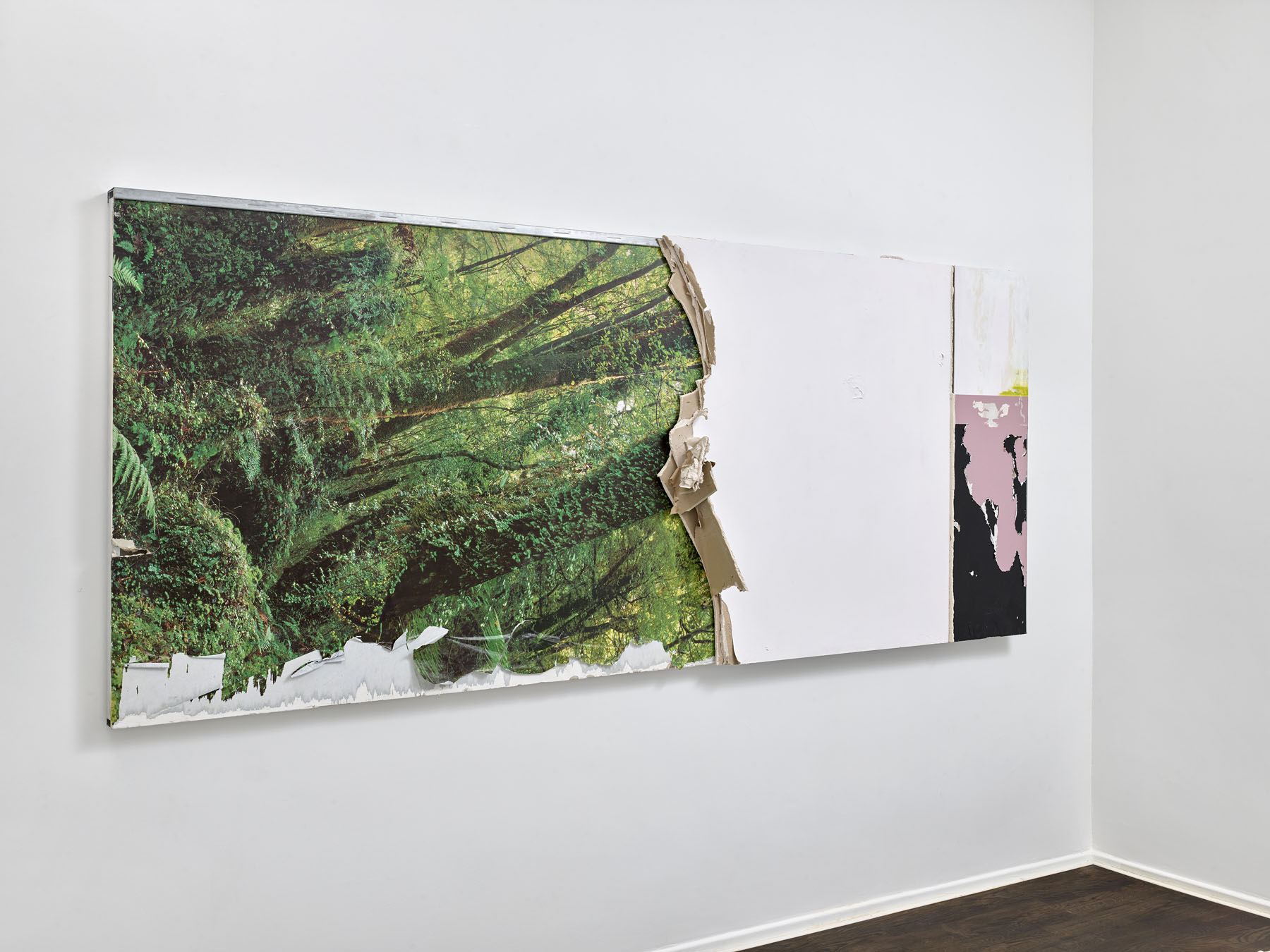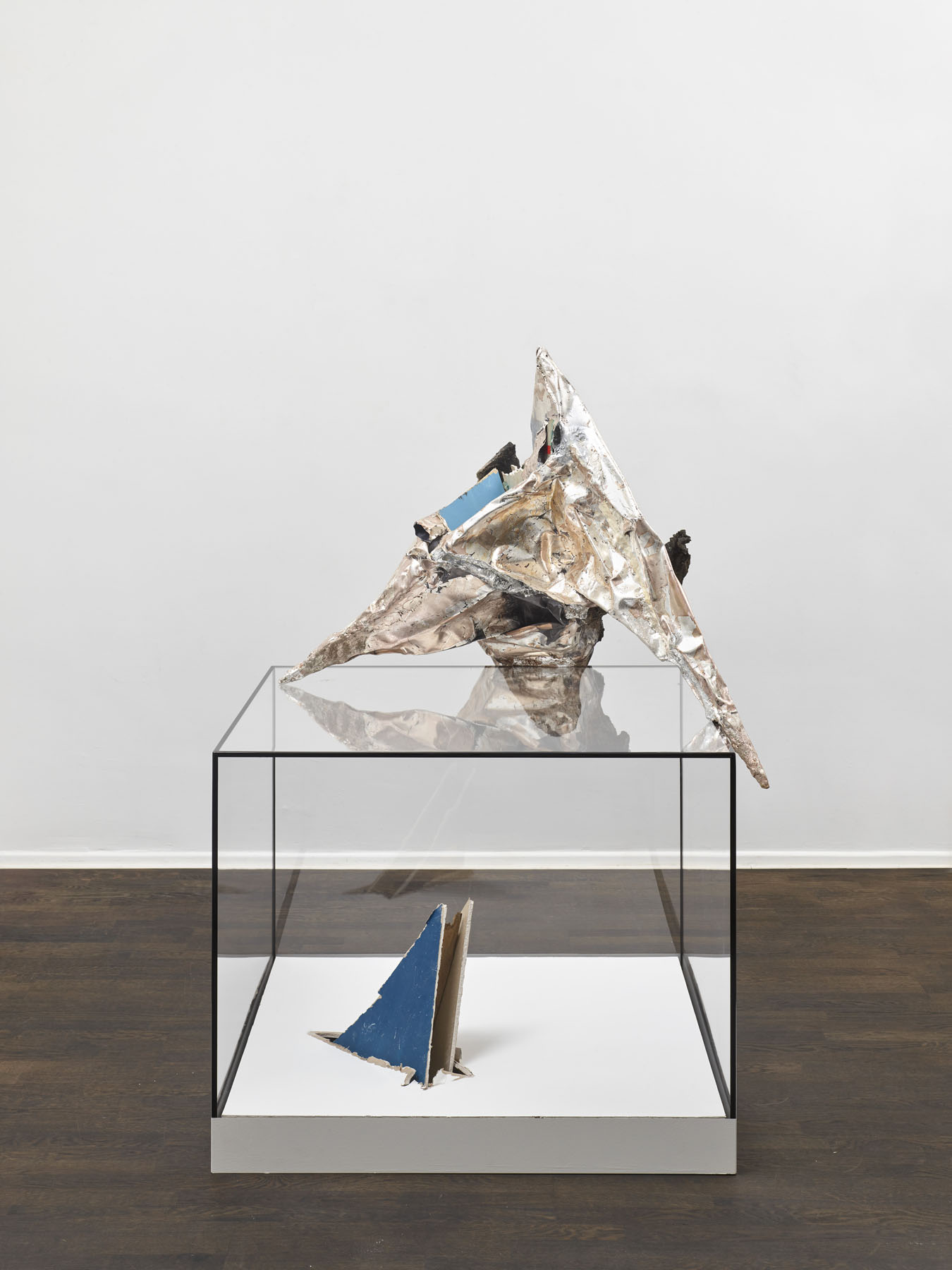Artist: Felix Schramm
Exhibition title: Transition
Venue: Markus Lüttgen, Düsseldorf, Germany
Date: September 4 – October 17, 2020
Photography: all images copyright and courtesy of the artist and Markus Lüttgen, Düsseldorf
Markus Lüttgen is pleased to announce the exhibition “Transition” by Felix Schramm as part of DC Open 2020.
The fragment of a mold, open on one side barely hiding its shell-like nature, huddles up against a negative form, subtly visualizing the intermediate stages of a sculpture in formation. It draws its productive force largely from moments of transition: between volume and emptiness, inside and out, a homogeneous whole and a heterogeneity of parts. The formal transitions one recognizes in the titular work fundamentally presuppose a moment of changing perspective. When we change position, it becomes clear that the sculptural element is the result of combining of two parts. We viewers thus become a key part in the sculptural structuring of space. Starting from this basic constellation, I’d like to address three moments of transition in the works, each of which is as systematic as it is provisional.
Formal transitions, which one might initially relate to Georges Bataille’s concept of the “formless.” For Bataille, the term “formless” does not describe the negation of form, but rather a dialectical transition from one form to another. This transition, however, entails the dissolution, transgression, and declassification of existing forms. The dialectical moment plays a key role in Felix Schramm’s formal thought. For what can be described here as “formless” also comes close to Bataille’s vehement attack on literally “all of philosophy”: namely, the idea that each thing can be defined based on one clearly classifiable form. Seen in a positive sense, formlessness is also the productive potential of the desire for the individual and the singular—for that which frees itself by constantly shifting and transitioning into new forms and cannot be captured by fixed concepts or classifications.
Transitions in the relationships between objects as they emerge within a sculpture’s spatial frame of reference, always connected with transitions and shifts in the modes of showing and presenting. In accumulated (Loop), for example, the placement of a metal-clad sculptural fragment on top of a vitrine—unceremoniously transformed into a pedestal—activates ways of showing on one hand, while it also hybridizes them beyond their familiar function on the other. In addition to some objects themselves being subjected to immense tension via folding and compression as well as other objects seeming to burst forth jerkily and unexpectedly from Schramm’s arsenal of formal thought as a result of this tension, further displacements arise from his use of presentation techniques.
A strip of photo wallpaper laminated onto sheet metal seems to reference the work located across from it, namely Multilayer 334, which in turn points back to the “Soft Corrosion” exhibition in Hamburger Bahnhof (2006). Here, a personal sense of being placed within the work is brought into play. In a similar vein, the element that has been spatialized by being mounted onto sheet metal and folded simultaneously exposes the contingency of its constructedness as an image. A plasterboard element serves as a model, pointing back to an outside beyond the sculpture as well as Schramm’s larger, catastrophic-constructive spatial interventions. Though, it may also be read as a fragment of a work that stands only for itself. Not least, it also transposes that which is shown in the vitrine, picking up on another strand of the “Intersection” series of works.
Spatial transitions where the gaze itself becomes part of the spatial order. This is the case in the work Transition discussed earlier, which is arranged with works from the series “Dark Site” in the rear room of the gallery. These works not only oscillate back and forth between monolithic flatness and a quasi-vitrine like presentation tool for everything this side of the surface and beyond. More importantly, these works draw one’s gaze in, entrancing it with crater landscapes of oxidized silver leaf behind acrylic glass, only to cast it back into the room a second later, establishing lines of sight based on moments of transition and changes of perspective. When the eye seems to temporarily rest on a piece of broken acrylic in Dark Site #35, the sculpture pulls it along in the next moment: from transition to transition.
-Sebastian Hammerschmidt, Cologne, 2020
Felix Schramm, Transition, 2020, exhibition view, Markus Lüttgen, Düsseldorf
Felix Schramm, Transition, 2020, exhibition view, Markus Lüttgen, Düsseldorf
Felix Schramm, Multilayer 334, 2020
Felix Schramm, Multilayer 334, 2020
Felix Schramm, accumulated (Spaced Out), 2020
Felix Schramm, Dark Site #35, 2020
Felix Schramm, Dark Site #35, 2020
Felix Schramm, Transition, 2020
Felix Schramm, Dark Site #34, 2020
Felix Schramm, Dark Site #34, 2020
Felix Schramm, Transition, 2020, exhibition view, Markus Lüttgen, Düsseldorf
Felix Schramm, accumulated (Loop), 2020
Felix Schramm, accumulated (Loop), 2020
Felix Schramm, accumulated (Loop), 2020














